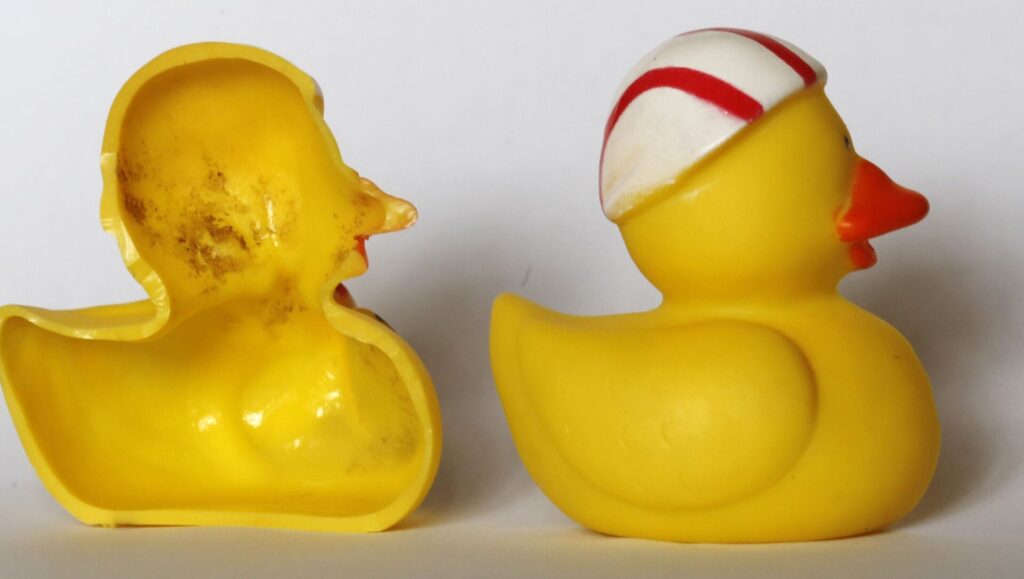
Introduction:
In a world filled with diverse individuals, it’s no surprise that our fears and obsessions can be just as unique. This article delves into the intriguing realm 10 Oddest Phobias and Obsessions you have Never Heard of. Brace yourself for a journey through the intricacies of the human mind.
The Fear of Peanut Butter Sticking to the Roof of the Mouth (Arachibutyrophobia):

Ever experienced that sticky sensation after enjoying a peanut butter sandwich? For some, it’s not just an annoyance – it’s a full-blown phobia. Arachibutyrophobia is the irrational fear of peanut butter sticking to the roof of the mouth, causing distress and anxiety in those who suffer from it.
The Obsession with Collecting Rubber Ducks (Rubber Duckiephilia):

While many people collect stamps or coins, some individuals find joy in accumulating rubber ducks. Rubber Duckiephilia is the passionate obsession with collecting rubber ducks in all shapes, sizes, and colors. It may seem peculiar, but for those who embrace it, each rubber duck holds a unique story.
The Fear of Palindromes (Aibohphobia):

Imagine being terrified of words that read the same backward as forward. Aibohphobia is the irrational fear of palindromes, creating a linguistic challenge for those who grapple with this unusual phobia.
The Obsession with Unusual Smells (Osphresiophilia):

While some find comfort in familiar scents, Osphresiophilia takes it a step further. This obsession involves an intense attraction to unusual smells, pushing individuals to seek out and revel in aromas that might be perplexing to the average person.
The Fear of Chins (Geniophobia):

Chins – a seemingly harmless facial feature, unless you suffer from Geniophobia. This phobia involves an irrational fear of chins, leading individuals to avoid looking at or being in close proximity to people with pronounced jawlines.
The Obsession with Counting Letters in Sentences (Ocdlettriphilia):

For those with Ocdlettriphilia, the act of counting letters in sentences becomes an irresistible compulsion. This obsession goes beyond typical counting behaviors, as individuals may find solace in the precise number of letters within written or spoken words.
The Fear of Sitting (Cathisophobia):

While sitting is a common and comfortable activity for most, Cathisophobia makes it a source of fear. This phobia involves an irrational aversion to sitting, making everyday activities like working, dining, or relaxing a constant challenge for those affected.
The Obsession with Duct Tape (Ductophilia):

Duct tape, a versatile tool with numerous practical uses, takes on a different significance for those with Ductophilia. This obsession involves an intense attraction to duct tape, with individuals finding creative and unconventional ways to incorporate it into their daily lives.
The Fear of Left-Handedness (Sinistrophobia):

In a world where right-handedness is the norm, Sinistrophobia manifests as an irrational fear of left-handedness. This phobia can lead to anxiety and discomfort when encountering left-handed individuals or situations that favor left-handedness.
The Obsession with Symmetrical Food Arrangement (Symmetrophilia):

For individuals with Symmetrophilia, the presentation of food takes center stage. This obsession involves a deep appreciation for symmetrical food arrangements, where the positioning of each element on the plate must adhere to a perfect sense of balance.
Related
- Science Drops the Mic: 5 Mind-Blowing Discoveries That Rebooted Reality
- 10 Creatures Whose Adaptations Will Blow Your Mind
- Weirdest Inventions Ever Made: You would never believe they exist!!!!
- 10 Weirdest Natural Phenomena that will Baffle you.
Conclusion:
As we navigate the diverse landscape of human phobias and obsessions, it becomes clear that the mind is capable of conjuring fears and attractions beyond our wildest imagination. Embracing the peculiarities that make each person unique, we can appreciate the intricate tapestry of the human experience.
FAQS
- Why do people have unusual phobias and obsessions?
- People develop phobias and obsessions due to a combination of genetic, environmental, and neurological factors. These unique fears and attractions often stem from individual experiences and perceptions.
- Can phobias and obsessions be treated?
- Yes, various therapeutic approaches, including cognitive-behavioral therapy (CBT), exposure therapy, and medication, can be effective in treating phobias and obsessions. Seeking professional help is crucial for tailored treatment plans.
- Are there cultural differences in the prevalence of phobias?
- Cultural factors can influence the prevalence of certain phobias, as societal norms and experiences contribute to the development of fears. However, many phobias and obsessions are universal in nature.
- How common are rare phobias?
- Rare phobias are not as common as more widely recognized fears, but they still affect a significant number of individuals. The rarity often adds to the complexity and uniqueness of each phobia.
- Can phobias and obsessions change over time?
- Phobias and obsessions can evolve or change over time, influenced by life experiences, personal growth, and therapeutic interventions. Understanding the underlying factors is essential for effective management.


